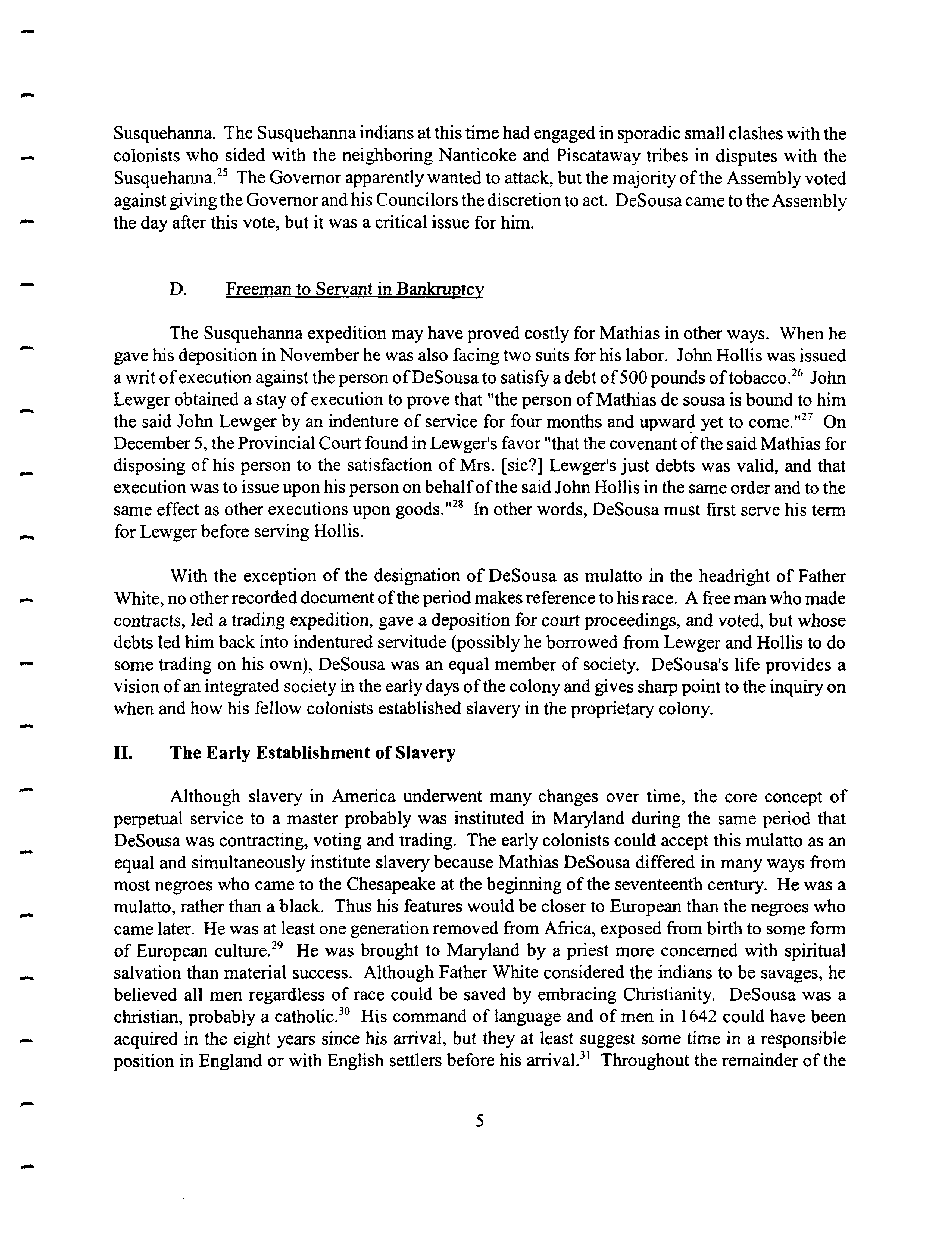|
Susquehanna. The Susquehanna Indians at this time had engaged in sporadic small clashes with the
colonists who sided with the neighboring Nanticoke and Piscataway tribes in disputes with the
Susquehanna.25 The Governor apparently wanted to attack, but the majority of the Assembly voted
against giving the Governor and his Councilors the discretion to act. DeSousa came to the Assembly
the day after this vote, but it was a critical issue for him.
D. Freeman to Servant in Bankruptcy
The Susquehanna expedition may have proved costly for Mathias in other ways. When he
gave his deposition in November he was also facing two suits for his labor. John Hollis was issued
a writ of execution against the person of DeSousa to satisfy a debt of 500 pounds of tobacco.26 John
Lewger obtained a stay of execution to prove that "the person of Mathias de sousa is bound to him
the said John Lewger by an indenture of service for four months and upward yet to come."27 On
December 5, the Provincial Court found in Lewger's favor "that the covenant of the said Mathias for
disposing of his person to the satisfaction of Mrs. [sic?] Lewger's just debts was valid, and that
execution was to issue upon his person on behalf of the said John Hollis in the same order and to the
same effect as other executions upon goods."28 In other words, DeSousa must first serve his term
for Lewger before serving Hollis.
With the exception of the designation of DeSousa as mulatto in the headright of Father
White, no other recorded document of the period makes reference to his race. A free man who made
contracts, led a trading expedition, gave a deposition for court proceedings, and voted, but whose
debts led him back into indentured servitude (possibly he borrowed from Lewger and Hollis to do
some trading on his own), DeSousa was an equal member of society. DeSousa's life provides a
vision of an integrated society in the early days of the colony and gives sharp point to the inquiry on
when and how his fellow colonists established slavery in the proprietary colony.
II. The Early Establishment of Slavery
Although slavery in America underwent many changes over time, the core concept of
perpetual service to a master probably was instituted in Maryland during the same period that
DeSousa was contracting, voting and trading. The early colonists could accept this mulatto as an
equal and simultaneously institute slavery because Mathias DeSousa differed in many ways from
most negroes who came to the Chesapeake at the beginning of the seventeenth century. He was a
mulatto, rather than a black. Thus his features would be closer to European than the negroes who
came later. He was at least one generation removed from Africa, exposed from birth to some form
of European culture.29 He was brought to Maryland by a priest more concerned with spiritual
salvation than material success. Although Father White considered the indians to be savages, he
believed all men regardless of race could be saved by embracing Christianity. DeSousa was a
Christian, probably a catholic.30 His command of language and of men in 1642 could have been
acquired in the eight years since his arrival, but they at least suggest some time in a responsible
position in England or with English settlers before his arrival.31 Throughout the remainder of the
�
|

